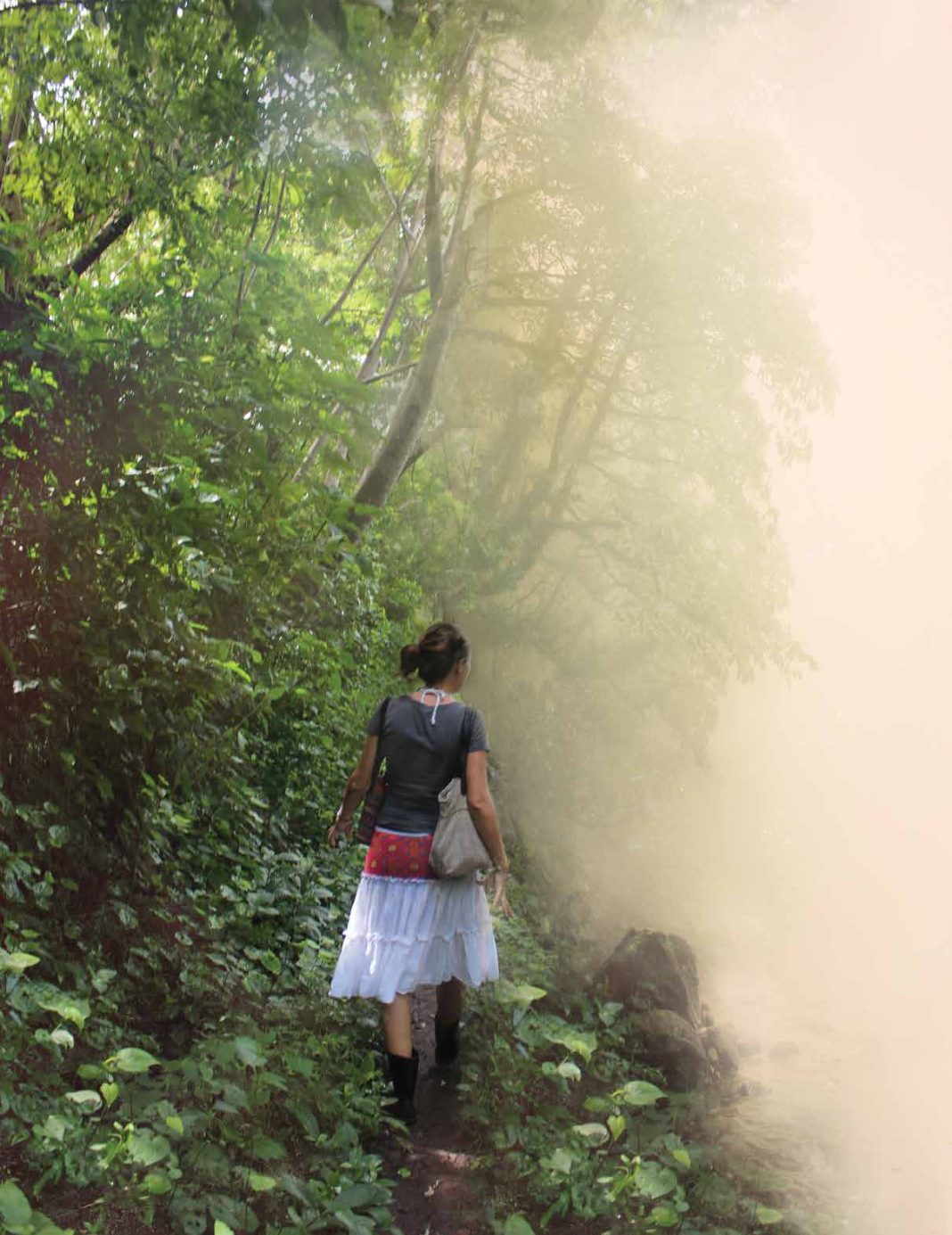MAGICAL DESTINATIONS
We asked a few of our favorite authors to tell us about the most enchanted places they’ve ever been. This is what they came up with …
A list of tour options hung on the wall of the open-air restaurant at Totoco, the eco-lodge where a friend and I were staying on this breathtaking Nicaraguan island. We could climb the volcano Maderas, whose slopes we were resting on as we overlooked one of the largest freshwater lakes in the world and the endless flowers that tumbled down to it. We could climb Ometepe’s other volcano, the still-active Concepcion, or kayak the Istian Wetlands that cut through the center of the island, or go zip-lining through the treetops. Or we could have just relaxed at the lodge, listening to monkeys, swinging in hammocks, or having yet another serving of fried plantains. We opted for a tour of the local village Balgue, right at the base of the volcano, to see how the Totoco Foundation—set up and run by the eco-lodge owners—worked with the local community on a variety of projects meant to improve everyday quality of life in the village. We were visiting the most beautiful place on earth and I wanted to know what life was really like there.
Totoco Foundation director Patricia Pillet, who hails from Spain and was seven months pregnant at the time, met us outside our idyllic thatch-roofed hut. She led us onto a wild path that twisted through bramble and past shacks where rice lay drying in the sun and all manner of animal walked free and colorful laundry swung from lines and women with babies on their hips waved to us from doorways. Patricia knew each one of them individually, and told us their stories—the ones who were rich, the ones who were struggling, the ones with new children. She pointed out one of the ancient, pre-Columbian petroglyphs scattered through the area, and I felt like we were going back through time as we pushed our way through the wild, alien landscape.
It was a long walk to the village, and I was inspired by how surely Patricia stepped along the rock-ridden dirt pathway. She was used to this walk, these people, and her passion was palpable. The sun blasted us. A wild pig darted into our path. As we emerged from the bramble and onto a main street, Patricia took us to the library the foundation had set up on the second floor of the Mano Amiga Community Center, with over a thousand donated books and some tables for people to gather around. A colorful mural covered the front of the building, depicting cheery trees and children. Next she took us to the Balgue health center, where the foundation offers health services that were unavailable before, like sexual health and learning workshops for local women and a functioning laboratory. Small, specific, concrete efforts to help people live better in this remote village.
When we arrived in the main part of the village itself, I was surprised at how quiet it was, how sparse—a few dusty streets, a little store with piles of vegetables and bags of rice, a school where a whole classroom had been given over to a family that had nowhere else to go. From the looks of things, there was nothing at all going on there. And then Patricia started showing us what was, in fact, going on.
Part of the Totoco Foundation’s mission is to provide microloans to Balgue residents who are trying to start businesses, or who have businesses but need help maintaining or growing them. As we ambled though this sleepy village, she pointed out a house with some chickens running around the backyard. This, she told us, was a thriving business; the man who owns those chickens was able to buy them with one of the Foundation’s collateral-free, low-interest microloans, and now has enough chickens and hens to provide poultry and eggs to the local market wholesale. Patricia led us up to an inconspicuous house and knocked on the door. A woman opened it—and revealed, to my surprise, a secondhand clothing store filled with bright clothing she had purchased with another microloan. It was magical, the way that Balgue slowly came to life under our gazes, as we learned where to look and how to see the thriving commerce taking place almost invisibly right under our eyes. A man who made jewelry out of seeds, the owner of a rustic cyber café, a local fisherman who needed new equipment to catch more fish.
This was the Ometepe I wanted to see. How people live, how people help each other to live better. Learn more at totocofoundation.org and totoco.com.ni.


































